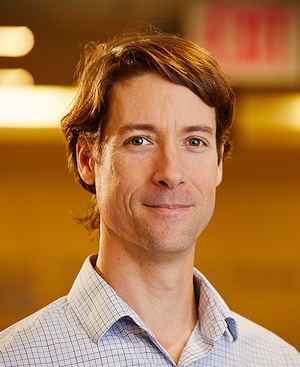By Sidhvi Reddy
Adam Phillippy, head of the Genome Informatics Section of the National Human Genome Research Institute (NHGRI), was recently named one of TIME magazine’s 100 Most Influential People of 2022. He, along with his team, completed the final sequence of the human genome. His project was crucial in uncovering the sequences that had been skipped in the 2003 Human Genome Project, uncovering many possibilities in the future of medicine and genetics.
Phillippy began his education at Loyola University Maryland believing that he would pursue computer science, fostering no interest in any type of biology or genomics. His interest in bioinformatics began with his undergraduate research with Arthur Delcher, who received funding from the NIH to study genome annotation software. “Art was hugely influential to me because he introduced me to computational biology and bioinformatics,” Phillippy said. “He made me realize for the first time that it was an actual career option that I had never been exposed to before.” Working with Delcher changed the whole direction of his career from programming computers to using computers as a tool to answer other interesting questions, Phillippy explained:
“I found that biology and genomics just have this limitless number of questions to be asked and answered, and it was a great marriage of problem solving and programming skills. It is a domain that has tons of questions to be asked.”
The world is constantly changing, oftentimes faster than our minds can comprehend. Phillippy takes pride in constantly innovating and contributing to knowledge that has the potential to make immense strides in medicine. The human reference genome sequence that was published last year is a “fundamental truth about how the world works,” said Phillippy. “It’s a great feeling of discovery that nobody’s ever seen before.” He went on to explain the importance of his work, which can be applied in many different circumstances. One example is the NIH Undiagnosed Diseases Network, which is a program whose sole mission is to solve the most difficult genetic cases. For many patients with rare genetic diseases, they are unable to obtain a diagnosis. The program examines their genome and compares it with the entire human genome to determine the variant in the genome causing the person’s disorder. As a result, patients are finally able to understand the causes of their disease and receive a diagnosis along with potential treatment options. In other cases, completely new diseases are discovered and further research can be done to explore treatment options. Phillippy’s research also opens the door for more personalized medicine, which is becoming increasingly important in this day and age. Patients may be able to receive medications that are the best match for their genome, thus maximizing the benefits from their medication as quickly as possible.
Looking forward, Phillippy is working on the Human Pangenome Project, which aims to diversify the human reference genome. Its goal is to identify and sequence the genomes of a diverse population of people from across the world to gain a better reference point for different demographics. As a result, a more diverse array of patients will be able to have their genome compared against hundreds of reference genomes, thus minimizing bias. The implications of this research is global, as it allows doctors and patients around the world to further understand genetic issues certain patients or populations may face, thus paving the way for more personalized medicine in all populations.
Phillippy acknowledges the power that an interdisciplinary education had in his training. Through his undergraduate education, he recalls that one of the most beneficial experiences he had was being able to bring together all of the things he was interested in intellectually and be surrounded by like-minded people who encouraged him. Through his knowledge of the humanities, science, and technology, Phillippy said that he found himself “taking [his] computer science skills and applying them to genomics, to both drive new technology and genomics, but also to uncover new knowledge.” Throughout his career, he has always combined the knowledge from both fields and passes it back and forth. “The NHGRI has been a great home for me as someone who is very interdisciplinary,” he explained. “I wouldn’t fit particularly well in any university department, because I’m very much between a bunch of different fields.” He relates his interdisciplinary nature with his membership in Phi Beta Kappa, recalling his induction ceremony at Loyola University Maryland. He invited two of his mentors—his research mentor, Delcher, and one of his philosophy professors. “It rings true to the culture of Phi Beta Kappa because of this interdisciplinary feel and the idea that we’re just after knowledge and that there’s valuable knowledge coming from all disciplines in all forms of research,” Phillippy said. “That ethos of Phi Beta Kappa fits well to my journey.”
Sidhvi Reddy is a first-year medical student at the University of Alabama at Birmingham Heersink School of Medicine. She graduated from the University of Oklahoma in May 2022 with a dual degree in microbiology and community health. The University of Oklahoma is home to the Alpha of Oklahoma chapter of Phi Beta Kappa.




